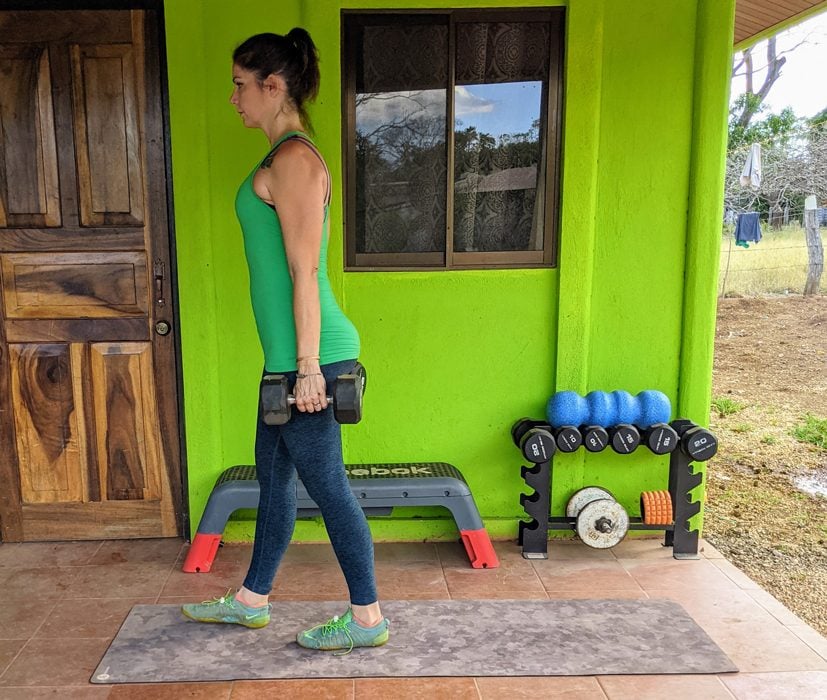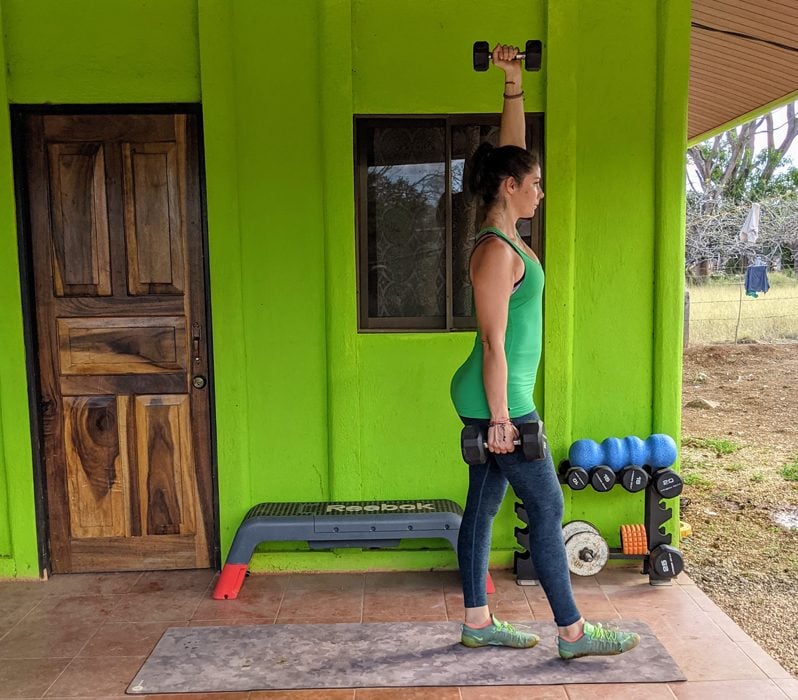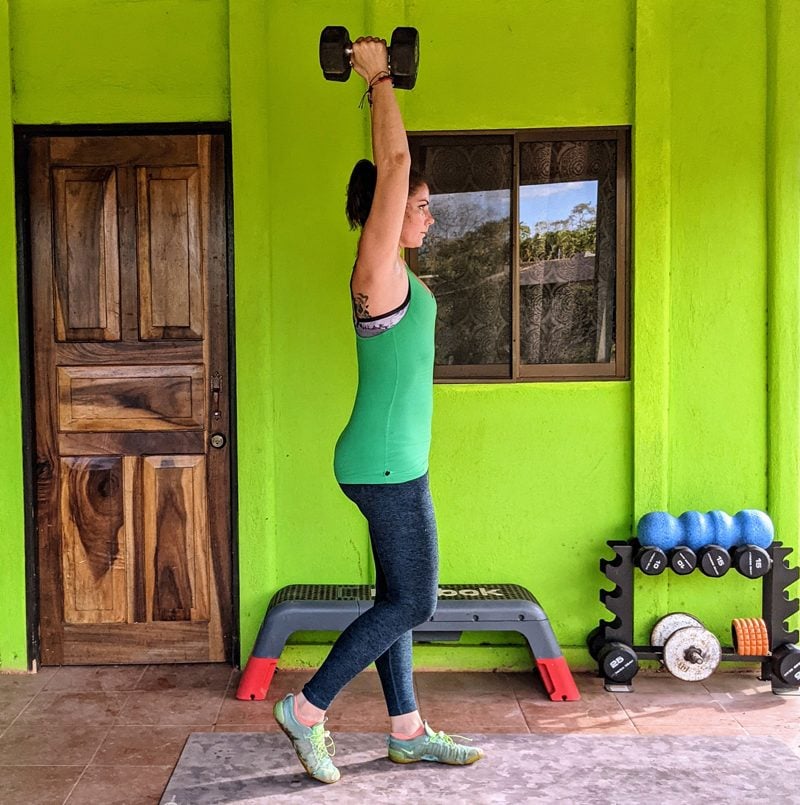Here’s How to Do the Farmer’s Walk—Safely
Updated: Jun. 22, 2022
Use the farmer's walk—or farmer's carry—to torch your lower body, core, and grip strength while also enjoying a burst of quick cardio.
What’s the farmer’s walk workout?
If you’ve ever watched farmers carry a bale of hay or a bag of feed, you have a sense of what the farmer’s walk entails as a workout. And why not model a workout on farm work? If you’ve spent any time at all on a farm, you know the day-to-day work requirements are strenuous. Between milking cows at the crack of dawn, fixing fences, checking on machinery, and managing livestock, just keeping things up and running is full-body, all-day exercise.
(This is the strength training routine that works your whole body.)
The farmer’s walk—or farmer’s carry as it’s also known—is an excellent example of an exercise commonly used by people engaged in daily physical labor. It can also benefit the average desk jockey, too. This is because the movement is a compound exercise—targeting multiple muscle groups at once.
It also requires you to walk with a load—a pattern that everyone uses when carrying groceries in from the store or lugging around a baby carrier.
“This form of exercise should be rotated into everyone’s program in the form of an accessory movement or finisher,” says CJ McFarland, the head strength and conditioning coach for Onnit Gym in Austin. “The farmer’s carry is a great way to train your grip, core, and legs. The metabolic stress can be altered by going heavier in weight to increase strength in these areas or lowered to work longer durations and elicit a conditioning effect,” he says.
(Try these 17 butt workouts if you want to replace squats.)
What the science says
According to a study published in the International Journal of Sports Science and Coaching, farmer’s walks may be a good lifting alternative to deadlifts, engaging many of the same muscle groups, while placing less stress on the lumbar spine. Of course, they’re not a perfect replacement. But, if you’ve taken deadlifts out of your workout routine due to back pain or discomfort, you may be able to slowly work your way back to the exercise by adding farmer’s walks to your routine.
(Here are back pain exercises for relief.)
In other words, depending on your own goals and how you incorporate farmer’s carries into your workout, you can use the exercise for developing strength or as a cardiovascular interval. Plus, you need very little equipment to reap the benefits—dumbbells, kettlebells, or even hay bales (you know, just in case you are, in fact, an actual farmer) can all do the trick.
(Pick up this at-home smart gym equipment trainers love.)
How to do the farmer’s walk correctly
The standard farmer’s walk involves carrying a load on either side of your body (dumbbells and kettlebells are the most popular options) and simply walking forward for a pre-determined distance or period of time.
Really, if you know how to walk (with good posture), you more-or-less know how to do a farmer’s walk. If you don’t typically pay attention to your posture as you’re walking around throughout your day, it’s important to slow down and pay attention while doing the farmer’s walk. This is because you are, in fact, carrying a weighted load as you perform the exercise, and any time you add more weight to the mix, you increase your chance of injury.
Even lifting the weight from the ground, or dragging your feet as you start to get tired could cause you to tweak a muscle or trip and fall. Therefore, it’s important to slow down and really pay attention to form.
Expert tip
“Try to reduce thoracic flexion, kyphotic posture—rounding your mid- to upper-back forward—during your farmer’s walks,” says McFarland. “You can do this by squeezing your shoulder blades back and down and keeping a proud chest. Be sure to emphasize driving the knees up and forward — doing this will reduce the probability of dragging the toes and falling forward.”
Then, simply walk forward, maintaining good posture, while carrying the weight. As you increase the resistance that you’re carrying, you may discover you need to shorten your stride length to maintain form and balance. (Try these balance exercises.)
If you’re just starting out, you may be tempted to program your farmer’s walks by how many steps you take, but McFarland says this isn’t the best idea. “In an effort to remain consistent in programming, I would prefer that you include farmer’s carries for time or distance. Counting steps can make things tricky because steps can vary drastically by increasing speed or stride length,” he says.
Is the farmer’s walk safe for everyone?
Farmer’s walks are a good exercise for most people, but of course, as with any exercise, if you feel joint or muscle pain (apart from the normal burn that develops as you push yourself), it’s best to skip it. McFarland points out that people with chronic wrist or elbow pain may be the most likely to experience problems performing farmer’s walks, especially when increasing resistance or trying different variations. And as with anything strength training movement, you’ll need to increase resistance over time to keep seeing results.
“Most people will have to use chalk or straps in order to drastically progress and elicit a greater stimulus for the core and legs,” he says.
(This is the best workout for every age.)
Farmer’s walk variations
There are lots of great farmer’s carry variations that you can incorporate into your workout. In fact, McFarland put together a video of kettlebell and hex barbell variations you can use if you have access to these pieces of equipment. But if all you have on hand are dumbbells, here are a few options you can consider.

Suitcase walk
The suitcase walk is simply a farmer’s carry with a load only on one side. This means that your body will naturally want to “tip” to that side, so your job is to maintain an upright and stable core with perfect posture as you walk forward. By extending your non-loaded arm out to the side as you walk, you can help offset the natural tendency to favor the loaded side of your body.
(These are the best core exercises to try.)

Offset walk
The offset walk is interesting because it includes different load placement for each arm (one arm overhead, the other at your side) and also uses a different level of resistance for each side. The arm that’s extended overhead uses a lighter resistance. This is due to the more challenging arm position and the required stabilization and engagement of the smaller muscle groups of your shoulder. Also, the arm that’s at your side uses a heavier resistance. This requires more balance, coordination, and upper body stability and control to perform the exercise correctly. Focus on keeping the overhead arm aligned with your shoulder and ear, and make sure you continue breathing steadily as you walk.
(Here’s how to build muscle.)

Overhead walk
The overhead walk is just what it sounds like—you carry the load directly overhead, rather than at your sides. Keep in mind that this position requires more engagement of your upper body and core. Also, due to the inclusion of the smaller, stabilizing muscles of your shoulders, you’ll need to decrease the amount of resistance that you typically use.
If you perform shoulder presses as a part of your typical strength training routine, choose a weight that’s slightly less than what you might use to perform the overhead shoulder press. This is particularly true if you’re using kettlebells in a “bottoms up” position (with the bell pointing upward, with the handle underneath). Maintaining this position requires more forearm and grip strength, as well as more engagement of the shoulder stabilizers.
(Try these upper body exercises with dumbbells.)
How to add farmer’s walks to your workout
When including farmer’s carries in your workouts, you can choose to focus on increasing resistance to develop strength, or decreasing resistance and increasing time as a cardiovascular challenge. This makes it a versatile option for all sorts of workouts. For instance, during a circuit training routine, you might opt to include 30 to 60 seconds of lower-resistance farmer’s walks between other exercises to keep your heart rate high.
(Try these 60-second exercise moves for a quick workout.)
Or, if you’re including the exercise as a strength training move to develop lower body, grip, and core strength, choose a higher level of resistance, and aim to carry your load for a pre-determined distance (for instance, 50 feet), or a pre-determined time (for instance, 15 seconds).
As with all exercises designed to help increase strength, the higher the resistance you’re using, the lower the distance or time you’d need to aim for. But regardless, perform several sets (between three and five sets) at a load and time or distance that are difficult, but not impossible, to complete with perfect form.
Get The Healthy @Reader’s Digest newsletter for what’s trending in health and wellness daily. Follow us on Facebook, Instagram, and Twitter, and keep reading:


















